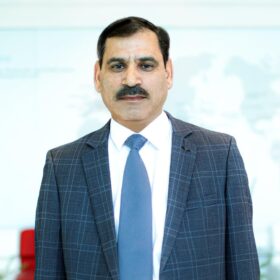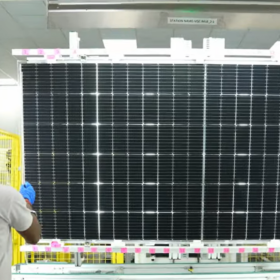Solar power in India is a fast-developing industry. Indeed, the country’s solar installed capacity reached 28.18 GW as of March 31, 2019.
The Indian government had an initial target of 20 GW capacity for 2022, which it achieved four years ahead of schedule. In 2015, the goal was raised to 100 GW of solar capacity (including 40 GW from rooftop solar) by 2022, targeting an investment of US$100 billion.
Solar products have also increasingly helped to meet household needs. Yet just 30% of rooftop solar power in India accounts for residential, and the rest industrial or commercial.
There is potential for more progress in the country’s residential solar market; however, there is a major roadblock in terms of lack of awareness. In general, homeowners prefer simple buying experiences over complex buying decisions, which involve making multiple phone calls, comparing quotes, and talking to installers.
The current scenario:
- Most residential customers buy PV systems by obtaining quotes directly from PV installers.
- The quote collection process can be tedious. Prospective customers must invest time and effort to identify installers, host site visits, compile paperwork, and complete numerous steps before obtaining a cost quote.
- Customers generally minimize quote collection costs by making a decision, typically after receiving fewer than three quotes
- This provides less bargaining power to customers as they cannot easily refuse a high-priced quote if few or no alternative quotes are available.
- This also allows installers to increase profit margins when bidding to customers who receive few quotes.
- Identifying pathways to reduce quote collection costs and enable customers to obtain more quotes may provide ways to lower PV prices.
How online quote platforms can help:
- Quote platforms generally reduce quote collection costs by allowing customers to obtain multiple quotes through a single transaction.
- A prospective customer may spend several hours getting a single quote directly from an installer but could receive several quotes from several installers through a single solicitation on a quoting platform.
- Lower quote collection costs mean customers gain more bargaining power on online platforms and should theoretically obtain lower prices.
- Data from EnergySage – an online solar quote platform in the United States – suggests customers on that quoting platform receive lower rates, on average than those obtaining quotes directly from installers.
- Quote platforms may provide similar opportunities for price reductions in battery markets as they do in residential PV markets.
In the United States, a few online quote platforms are already gaining popularity. EnergySage and PickMySolar are the most commonly used.
How does an online solar platform work in the United States?
- The PickMySolar website gets the homeowner started by asking him/her to enter their monthly electricity bill and address and calculates the difference in expenditure before and after going solar.
- The homeowner provides his/her address and phone number for a quick phone consultation.
- A project analysis is completed by evaluating enhanced satellite photos of the roof, local ratings of sun exposure, and the local utility rate schedule.
- Shows offers for the project from prequalified solar companies with bids, analysis, and recommendations from a personal solar expert for the homeowner to compare.
- The homeowner executes a solar installation contract at the terms of the winning bid if he/she elects to install a solar system through PickMySolar.
- PickMySolar is owed a fee by the installer with whom the homeowner signed a contract. They usually pay them when the installation is complete.
Pricing analysis – Online platform vs. US market:
- Platform prices were about $0.41/W (10%) lower, on average than market prices.
- About 72% of platform prices are lower than $4/W, compared with about 51% of market prices.
- Platform prices are lower than market prices in 10 of the 12 states where the platform and market data overlap.
- Platform prices are slightly higher than market prices in three states, but these differences are based on smaller sample sizes and may not be statistically significant.
Why we need a similar platform in India
India’s e-commerce market, dominated by Flipkart and Amazon, has the potential to grow more than fourfold to $150 billion by 2022. This growth is fueled by rising incomes and a surge in internet users, according to a recent report by software industry lobby group NASSCOM and consulting firm PwC India.
During the period, the size of India’s middle-class is expected to swell to 540 million from 380 million in 2017, states the report, adding that the e-commerce market was worth $36 billion last year.
The report also mentioned that “A ‘Make-for-India’ solution approach along with conducive policy environment can potentially make e-commerce a $150 billion market by 2022 with a globally leading compounded annualized growth rate of 35%.”
This shows that online solar will be one of the most significant contributors to solar adoption in India. Currently, there are some Indian websites which offer to buy solar online, however, they are more dedicated to installers who already understand the products well.
Homeowners need an online quote platform, which offers a seamless buying experience to consumers by providing them guidance on buying, such as bid comparisons, pros and cons of different types of inverters, panels, etc.
These platforms can increase solar power awareness among Indian homeowners and help increase the adoption of rooftop solar power in the Indian residential market.
About the author

Indranil is a senior pricing analyst at Enphase Energy, an energy technology company that designs and manufactures software-driven home energy solutions. He manages product pricing, pricing analytics, software and services monetization at Enphase. Outside of work he is a cricket enthusiast and likes reading fiction.
The views and opinions expressed in this article are the author’s own, and do not necessarily reflect those held by pv magazine.
This content is protected by copyright and may not be reused. If you want to cooperate with us and would like to reuse some of our content, please contact: editors@pv-magazine.com.








Echo the sentiments shared in this article. At Glowship we have been simplifying the purchase process by providing homeowners a comprehensive, localized recommendation for both Hybrid & Grid-tied systems in various configurations in real-time along with a detailed comparison of the associated benefits & metrics. You can learn more about it here: https://www.glowship.com/solar/solar-power-for-homes-offices.html
We are also Enphase’s online partner on India.